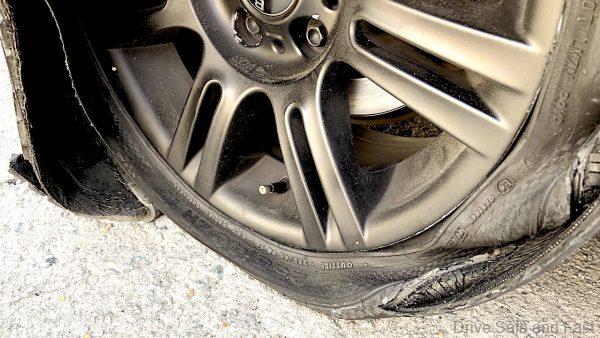No matter what sort of tire damage you’ve noticed on your car, sidewall damage, in particular, can be very troublesome.
Whether you’ve been in an accident or have suddenly noticed cracks in your sidewall, you may be wondering if it’s time to replace your tires or if you can rectify the damage with a repair. Keep reading below for everything you need to know!
Sidewall tire damage is any sort of cracking or splitting that occurs to the side of the tire. This damage can occur due to an accident, defect of aging, or even everyday wear. Sadly, this sort of damage cannot be repaired and is considered dangerous. Because sidewalls do not have steel cables, any sort of damage can quickly progress and be unsafe to drive on.
Keep reading below to learn how to prevent sidewall damage, why you shouldn’t attempt to patch it, and more!
You should never drive around with sidewall damage. While driving, the damage to your sidewall can quickly become worse. After the integrity of the tire has been compromised, things can go downhill rather quickly.
Plus, sidewall damage can also lead to blowouts. As you might imagine, this can cause damage to your vehicle, as well as put you and others in danger.
For the most part, there isn’t a level of sidewall damage that is okay. You never know when even a tiny problem will suddenly become severe and lead to a blowout. Even simple driving can make the wound much worse very quickly.
Furthermore, damage to your tire sidewall can also lead to handling issues. Because the tire has been compromised, your car may not handle as well as it did previously. Even if your tire doesn’t blow, poor handling can lead to an accident.
Remember, a tire’s sidewall is one of the most vulnerable. Unlike other parts of the tire, the sidewall does not have any cords holding it together. In other words, it is just rubber.
Therefore, a little bit of damage can quickly become more severe with regular use.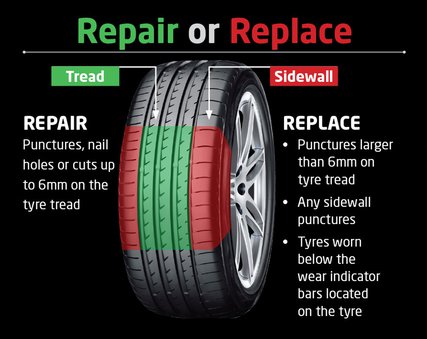
Technically, sidewalls can be repaired. In most cases, you can find someone willing to repair a sidewall.
However, these repairs are not typically very effective and do not last very long. Even when repaired, you never know when your tire’s sidewall will give out again, potentially leading to a blowout and accident.
For this reason, it is not advised to drive on a tire with sidewall damage – even if that damage has technically been repaired.
While a tire’s tread can be patched, the sidewall is weaker because it does not contain any cords. In other words, it’s just plain rubber, which isn’t very stable after it’s been damaged.
Usually, it is in your best interest to replace the whole tire. While this is more costly, patches simply can’t stand up to the stress suffered by the sidewall.
Simply put, you can’t. At least, you can’t safely.
With that said, there are some directions online for fixing sidewall cracks and similar problems.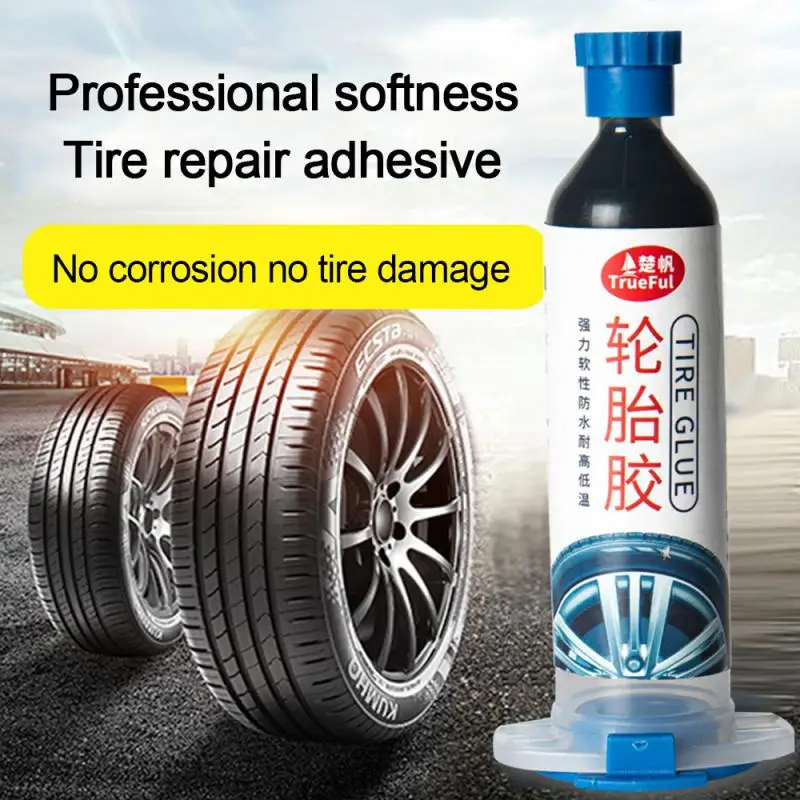 However, these repairs are not recommended, as they don’t last long and can cause blowouts at any point.
However, these repairs are not recommended, as they don’t last long and can cause blowouts at any point.
While tread repairs are possible, sidewalls do not have steel cables. Therefore, their integrity is severely compromised after cracks or other sorts of damage.
For this reason, I highly recommend just purchasing a new tire if your sidewall becomes damaged. While it might be more expensive, it is much safer.
Sidewall damage can occur for many different reasons – from tire age to accidents.
Firstly, underinflation of the wheel can cause sidewall damage. Luckily, most cars today have monitoring systems that let you know when your car’s tire is underinflated. However, you should still regularly check the inflation level.
After all, you never know when your car’s internal monitoring system will malfunction.
Secondly, tires become more susceptible to damage as they age, including sidewall damage. After many years of use, the rubber may simply break down to the point that it cracks.
Technically, nothing caused this damage. Instead, it is just a symptom of the tire’s age.
Thirdly, overloading your tires can cause them to bow too much, leading to cracks and similar damage on the sidewall. Furthermore, overloading can make your vehicle wobble, which can also cause sidewall damage.
Be sure not to exceed your tire’s load.
Furthermore, regular tire wear can cause sidewall damage. If your tire is worn and overused, the rubber may not be very strong, making it more prone to damage.
Of course, something still has to typically hit your sidewall for it to crack in this instance.
Finally, hitting curbs and similar obstacles at high speeds can also cause sidewall damage. In most cases, the damage starts minor and then becomes worse as you drive around.
Typically, a simple examination will let you know if your sidewall is damaged. Cracks and punctures are pretty easy to see with the naked eye, even if you aren’t a trained expert.
With that said, indents are typically standard and shouldn’t affect performance. These indents are caused by the fabric cords that cover the inside of the sidewall. Where these cords intersect, there may be a slight indent.
Again, this is normal and nothing to worry about.
On the other hand, bulges and bubbles are a sign of underlying cord damage. Sadly, this sort of damage cannot be repaired. Therefore, you must replace the whole tire – preferably as quickly as possible.
Significantly, you should never drive on a tire with potential sidewall damage. In many cases, this damage is highly prone to bursting, as sidewalls are not very strong.
Under most definitions, the sidewall of a tire is the side of the tire, as you might guess from the name. Pretty easy to remember.
In actuality, the sidewall doesn’t do much. Its primary purpose is to protect the cord body on the inside.
Furthermore, meaningful information about the tire is often also printed onto the sidewall. Usually, this information includes the tire’s size, load capabilities, and speed rating.
Usually, this information includes the tire’s size, load capabilities, and speed rating.
Because sidewalls are exposed to the sun and elements more, they are often explicitly designed to withstand ozone and UV light.
With that said, sidewalls lack the steel cables that are underneath the thread. Therefore, they are not as durable or repairable after being damaged. Once their integrity is breached, they are pretty susceptible to blowouts.
In some cases, sidewall damage is covered under warranty. However, you need to check with your tire manufacturer and the specific warranty covering the tire. In many cases, there are many stipulations to the warranty.
For instance, damage that is caused by the workmanship and material problems are often covered. However, if you hit something and damaged your sidewall, it wouldn’t be.
In other words, tire warranties often don’t cover things you did to the tire – only problems caused by apparent defects.
Therefore, if the sidewall just randomly breaks, it may qualify for a replacement under warranty. But if you hit something with the tire, it wouldn’t be.
In many cases, you have to prove that it’s a defect, which can be challenging to do in many cases.
However, many warranties also don’t cover damage caused by “misuse.” As you might imagine, what counts as misuse varies. Many warranties will outline things you can’t do with the tire without voiding the warranty.
Furthermore, just like with all warranties, tire warranties eventually expire. Usually, this occurs when the tire is six years old or worn past a certain tread level. After this point, the tire is considered old and should be replaced.
After this point, damages that occur to the sidewall won’t be covered. The company doesn’t expect the tire to last longer than six years.
Sometimes, you can purchase separate “road hazard” warranties. Simply put, these warranties cover your tires if you run over something that causes a puncture.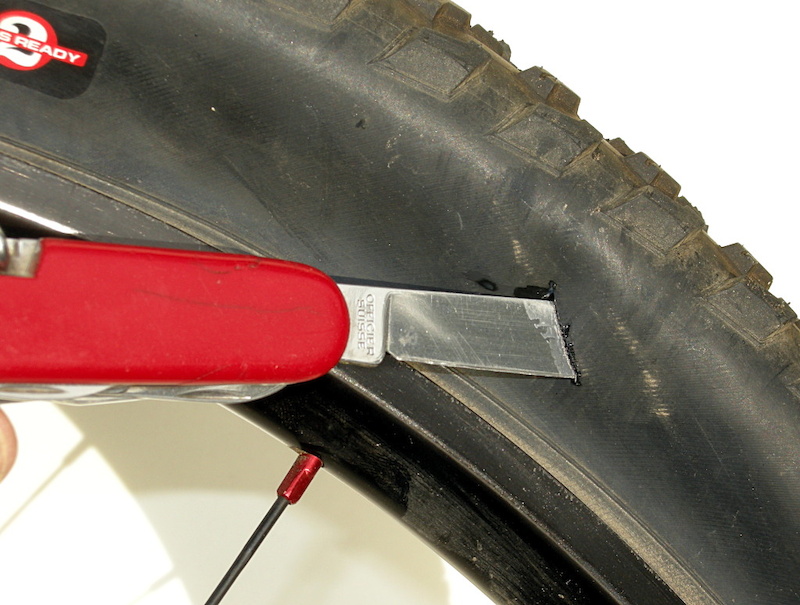 Usually, the warranty covers the repair, or a new tire should the repair not be possible.
Usually, the warranty covers the repair, or a new tire should the repair not be possible.
Of course, this warranty would cover your sidewall if it became punctured. However, punctures are pretty rare on sidewalls since they don’t touch the road.
Cracks are a sign that your tire’s sidewall has become compromised. Therefore, it is a sure sign that the tire needs to be replaced. While many things may cause the sidewall to crack, none of them are good.
For instance, direct damage can cause cracks, such as hitting a curb. At the same time, old tires may simply crack due to wear and tear. Sometimes, UV light can even cause unused tires to crack.
Unlike punctures, cracked sidewalls cannot be repaired safely. With that said, there are some repairs available online and some professionals willing to give it a try.
However, it is often not the best idea, as damaged sidewalls have severely limited integrity. Without the steel cables that the treads have, sidewalls have a tough time staying together, even after being repaired.
In other words, sidewall repairs can come undone at any point, leading to blowouts.
Plus, air can easily escape through the cracks in a tire, leading to flat tires before you know it. Even great repair jobs often can’t stop these leaks.
If you are looking to learn more, you might also be interested in reading up on if you can get a flat tire from hitting a curb, tire feathering, and blown-out tires.
Sidewall damage can occur for a variety of different reasons, ranging from accidents to aging. Sadly, no matter what caused the damage, sidewalls cannot be repaired with patches like other parts of the tire.
Furthermore, even minor damage can become worse while you’re driving. Sometimes, this damage can lead to random blowouts, endangering you and other drivers.
For this reason, any tire with sidewall damage should be quickly replaced.
If you’re like most drivers, you probably don’t give much thought to your car’s tires until there’s a problem.
And while a tire blowout or flat may be the most obvious indication that it’s time for a new set of rubber, other types of damage can also signal the need for a replacement.
One such type of damage is sidewall wear or damage. So, what is tire sidewall damage, and when should you replace a tire because of it? Read on to find out.
Table of Contents
1
A sidewall tire damage is what it sounds like; damage to the tire’s sidewall, meaning the damage is on the side of the tire and not the tire tread. Damage to the tire’s sidewall is not repairable in most cases.
You can often spot one by seeing a deep scratch or a bubble on the tire’s sidewall. This can come from a small accident or if you drove too close to the road’s curb.
It can also happen because of sticks or other sharp things along the road. A sidewall tire damage is really bad to drive around with, and now we will explain why.
No, a tire sidewall damage is not safe to drive with. The sidewalls of the tires are much more sensitive than the tread area. In many cases, the damage is damaging the whole structure of the tire, and it can cause it to blow at any moment.
This does also depend a little bit on how big the scratch or damage is. If the scratch is small and super-shallow and does not reach the threads, it is probably not something you should worry too much about.
A rule of thumb for determining how much sidewall tire damage is too much is that if you can see the threads in the damage, it is definitely time to replace the tire.
The threads are often located 1/8″ to 3/16″ (3mm to 4.5mm) into the tire, but to determine exactly if you need to replace the tire or not, you need to look at the damage itself.
If there is an air-bubble on the tire’s sidewall, you need to replace it straight away because there is a big risk that it will blow at any moment.
To be sure that nothing serious will happen to the tire, you should let an expert look at the damage.
Find a repair shop that is not selling tires and ask them. If you go to a repair shop that is selling tires, it is a big chance that they will want you to buy new tires.
A sidewall tire damage that reaches the threads should never be repaired because it damages the tire’s whole structure.
If the tire’s sidewall has a bubble, it is not fixable either, and small punctures should either not be repaired.
The only time you can glue together a sidewall tire damage if it is a super shallow scratch that is not reaching the threads.
However, if the scratch or damage is this shallow, there is no point in gluing it either, so I would say that you should never repair a sidewall tire damage.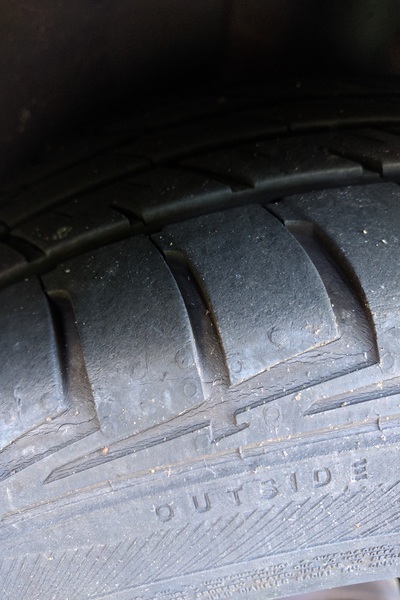
RELATED: Can You Patch a Hole in the Sidewall of a Tire?
There are a lot of things that could cause tire sidewall damage. Mostly it is because of sharp objects you were hitting with the sidewall of the tire by accident. It can also be caused by age or driving around with too little air pressure in the tires.
Here are the common causes of tire sidewall damage:
If you change the tires on the drive wheels, you should change both tires because the different tire diameters will stress the transmission.
If you replace the tires on the rear of a front-wheel drive car, for example, you can replace just one tire.
If you have a 4wd car, it is always recommended to replace all four wheels because different tires’ diameters can cause stress to the differential or transmission.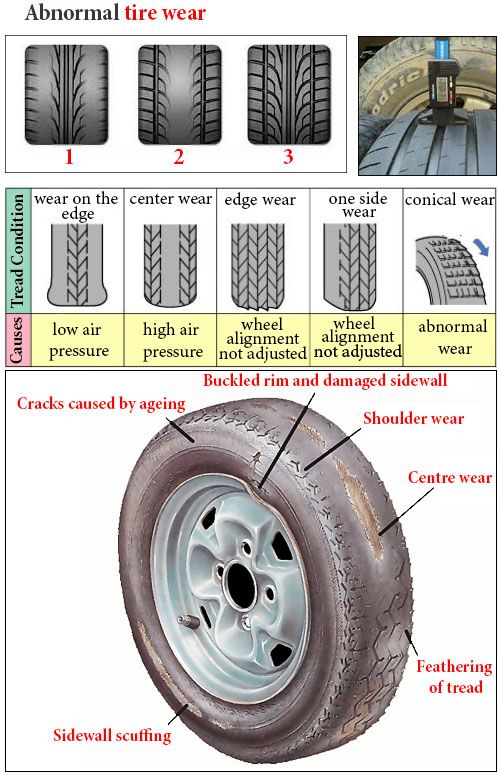 The best way to find out is to ask your authorized dealer if you can replace just one tire on your specific car model.
The best way to find out is to ask your authorized dealer if you can replace just one tire on your specific car model.
No, sidewall tire damage is usually considered self-inflicted damage and not a manufacturer problem, and therefore not covered under warranty in most cases.
But if you want to be sure, you can always ask or read your warranty documents carefully because there are cases where you have a special car warranty.
A car tire typically has a sidewall that is between 1/4″ to 5/8″ (5 to 15 mm) thick. However, this can vary depending on the specific tires that are being used. Some tires may have thicker or thinner sidewalls, depending on their design and intended purpose.
For example, race car tires often have very thin sidewalls to help improve grip and handling. Likewise, some off-road tires may have thicker sidewalls to help protect against punctures from rocks or other debris.
Tire sidewall damage is never OK. A bulge or tear in a tire’s sidewall means that the internal tire structure has been compromised, and the tire should be replaced immediately. Driving on a sidewall damaged tire can cause it to blow out, resulting in a serious accident.
A sidewall tire damage is a cut or other damage to the tire’s sidewall. It’s not recommended to drive with or repair damage on the sidewall of the tire. The sidewall is an important part of the tire’s structure, and if it is repaired, it can affect the handling of the vehicle or even cause a tire blowout, which can lead to an accident.
Tire sidewall damage can be caused by many things, but the most common cause is from hitting a sharp curb or pothole.
If you have sidewall damage on a tire, I would recommend having it replaced as soon as possible by a qualified mechanic. Don’t try to save money on repairing sidewall tire damage, it’s not worth it!
Learn more:
LADA
UAZ
KIA
Hyundai
Renault
Toyota
Volkswagen
Skoda
Nissan
BM -Benz
Mitsubishi
Mazda
Ford
All brands
Most often, we ourselves are to blame for the fact that tires become unusable.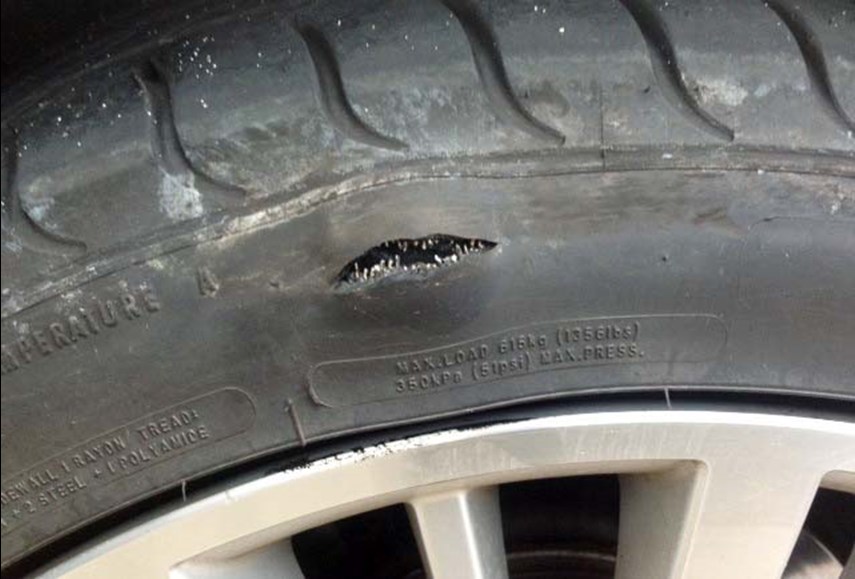 But this can be avoided.
But this can be avoided.
Related materials
You have never seen such tires: even the police were surprised
In the process of using a tire, a variety of damages can occur, most of which are the fault of the driver. As a result, rubber is wasted, and since the law prohibits the use of different tire models on the same axle, you have to spend money on replacing the second tire.
The most common damage is puncture . This is the most harmless type of damage, but only if you notice it in time and repair it right away. It is absolutely impossible to drive on a flat tire, even a couple of meters! The damage caused by running on a flat tire or with low pressure is catastrophic. This causes the sidewalls to deform more than they should, which causes the tire to overheat, delaminate, and the carcass becomes unusable due to broken cords. As a result, the tire will have to be thrown away. In addition, the edge of the rim can also be damaged.
Punctures are of two types: with and without cord damage. To determine this, it is necessary to remove what pierced it. If the edges of the puncture tightly converge, then the cord is not damaged and it will be possible to repair the tire without removing it from the disk. Otherwise, if the edges do not converge, you will have to disassemble the wheel and make repairs with strengthening the frame from the inside. Alternatively, in the field and in the absence of a spare wheel, such a puncture can be repaired without removing the tire from the rim, after which you can carefully drive to a tire fitting or garage and make a full repair.
Related materials
Is it possible to pump up a wheel without a compressor - the experiment "Behind the wheel"
When repairing, the puncture site should be cleaned and marked. Further, it all depends on what kind of repair kit you have - as a rule, instructions are attached to them. There are sealants that are poured into the tire through the nipple, after which the wheel turns with the puncture down and the substance seals the hole.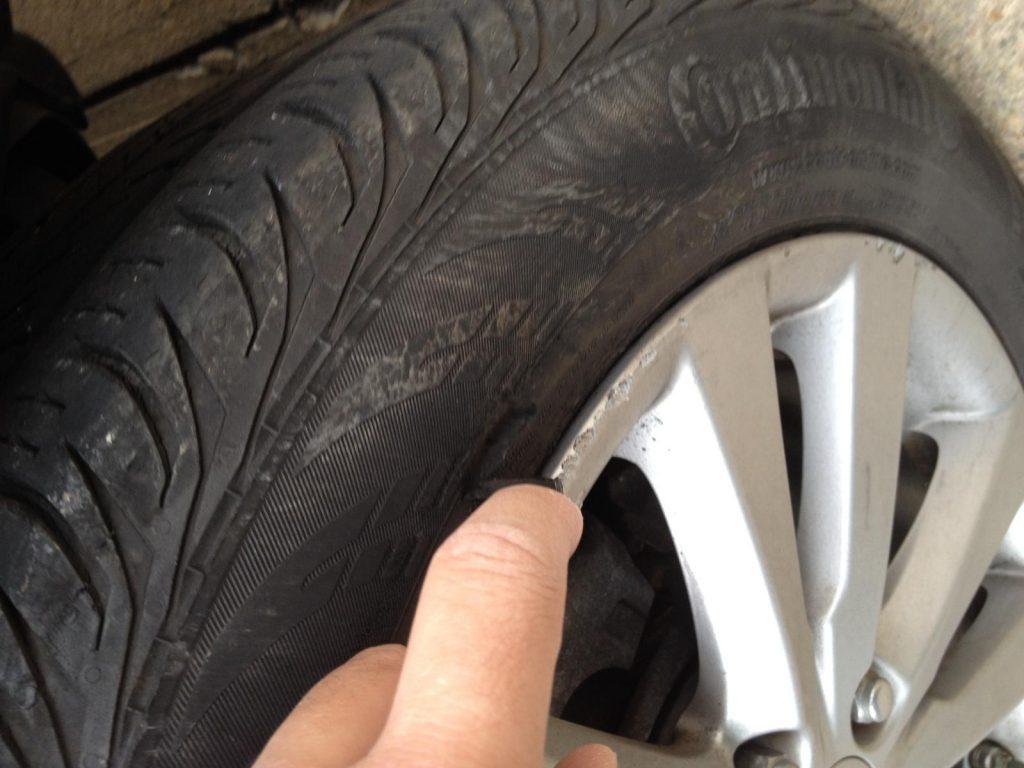 Repair using a tourniquet or insert is somewhat more complicated, but also more durable: the edges of the hole are polished with a special tool, after which the tourniquet treated with a special compound must be inserted into the tire through a puncture with a special awl, pulled out (not completely) out and cut flush with the surface.
Repair using a tourniquet or insert is somewhat more complicated, but also more durable: the edges of the hole are polished with a special tool, after which the tourniquet treated with a special compound must be inserted into the tire through a puncture with a special awl, pulled out (not completely) out and cut flush with the surface.
In case of damage to the cord due to a puncture, the tire must be removed from the rim in order to install a reinforced patch with an additional cord on its inner surface. One of the sides of such patches has an adhesive layer that promotes cold vulcanization. After such a repair, wheel balancing will be required. To seal punctures from the inside, patches in the form of a mushroom are also used, with a leg that goes into the puncture. Such patches are also covered with a special adhesive for cold vulcanization.
Cuts or holes , unlike punctures, are not repairable, as they violate the integrity of the frame, which can no longer be strengthened. In addition, breakdowns are always sudden and occur on the go: the tire abruptly loses pressure and before the car comes to a complete stop it has time to make several revolutions “on the rims”, which breaks the cord and destroys the layers. It is not recommended to use such a weakened tire, even if it was possible to repair and strengthen the place of the rupture or cut, in the future.
In addition, breakdowns are always sudden and occur on the go: the tire abruptly loses pressure and before the car comes to a complete stop it has time to make several revolutions “on the rims”, which breaks the cord and destroys the layers. It is not recommended to use such a weakened tire, even if it was possible to repair and strengthen the place of the rupture or cut, in the future.
Related materials
8 tire storage rules - do you follow them all?
Incorrect storage of tires can cause cracks . The danger of such damage is that moisture enters the cord through cracks, which renders the frame unusable. In addition, air can escape through cracks. Unfortunately, cracks are not repairable, and tires with them will not last long: sooner or later they will deform, become covered with swellings due to rusted and torn cord or because of driving with pressure below the recommended one.
Blisters or bulges can appear on a tire for a variety of reasons - it always happens due to a broken cord or delamination in the carcass. In the first case, an obstacle was hit and the impact broke the cord or the cord was cut through with a sharp object. In the second case, there is no damage on or near the hernia, which means that it appeared either due to a factory defect, or due to frequent driving with pressure below the recommended one. The danger of hernias is that they can explode at any moment and provoke a skid, which will lead to an accident. If there is nothing to replace a tire with a hernia, then it is better to rearrange it to the rear axle and drive very carefully. Like cracks, a hernia cannot be repaired. Sometimes small blisters resulting from impacts or cuts are reinforced with reinforced patches, but there is no guarantee that the tire will not explode. Therefore, tires with hernias are recommended to be replaced immediately.
In the first case, an obstacle was hit and the impact broke the cord or the cord was cut through with a sharp object. In the second case, there is no damage on or near the hernia, which means that it appeared either due to a factory defect, or due to frequent driving with pressure below the recommended one. The danger of hernias is that they can explode at any moment and provoke a skid, which will lead to an accident. If there is nothing to replace a tire with a hernia, then it is better to rearrange it to the rear axle and drive very carefully. Like cracks, a hernia cannot be repaired. Sometimes small blisters resulting from impacts or cuts are reinforced with reinforced patches, but there is no guarantee that the tire will not explode. Therefore, tires with hernias are recommended to be replaced immediately.
Related materials
Tire blackening - 6 ways to polish. Inexpensive!
Tire sidewalls can be damaged by rubbing against curbs or the asphalt edge when pulling over. If you are prone to such a driving style, then it is recommended to inspect the inner and outer sidewalls from time to time and, if abrasion is found, swap the wheels in order to prevent the cord from being exposed - the rubber thickness on the sidewalls is small (1.5–3 mm), and it can be rubbed to the frame very quickly.
If you are prone to such a driving style, then it is recommended to inspect the inner and outer sidewalls from time to time and, if abrasion is found, swap the wheels in order to prevent the cord from being exposed - the rubber thickness on the sidewalls is small (1.5–3 mm), and it can be rubbed to the frame very quickly.
Often the cause of tire damage can be poor-quality tire fitting , during which the bead ring was damaged. In this case, the tire loses its geometry and “sits” crookedly on the disk - it writes out “eights” during rotation, and lateral vibration appears during the ride. It is impossible to repair such a tire - you need to replace it with a serviceable one as soon as possible before it damages the suspension: rods, hubs and bearings.
You can find out whether you are using tires correctly and what invisible damage they have received by the characteristic wear of the tread, the varieties of which are collected in the table for convenience:
Double side shoulder wear
Driving with lower than recommended tire pressure.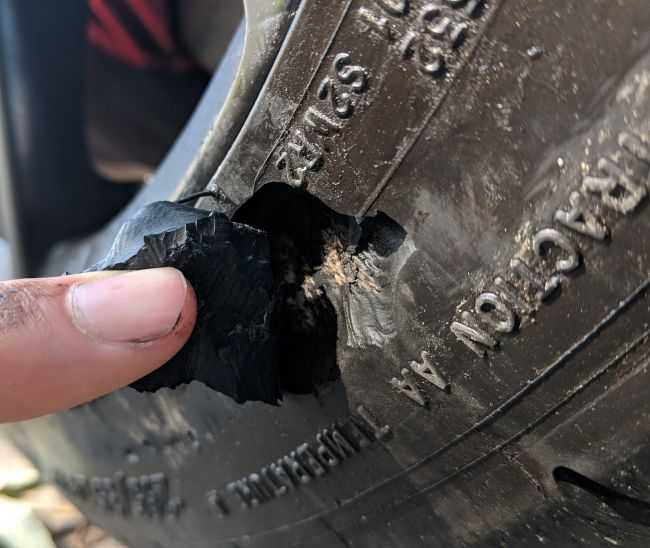
Inflate the tires to the pressure recommended by the automaker (a plate with recommendations is attached in the driver's door opening) and find the cause of the fall: puncture, cracks, hernia, nipple, rust on the disc rim in the place where the tire fits, etc.
Center wear
Tire pressure too high.
Reduce the pressure to the recommended (indicated on the tablet in the driver's doorway)
In the form of rings and furrows
can be found on trailers or rear wheels of pickups and vans due to vibrations and vibrations and vibrations due to vibrations and vibrations bouncing at high speeds.
Changing wheels on a loaded axle to equalize wear, driving with a heavier load.
Chipped wear with cuts
Frequent wheel spin on rocky surfaces.
Move the wheels to a non-driving axle, use the gas pedal more carefully when starting to move.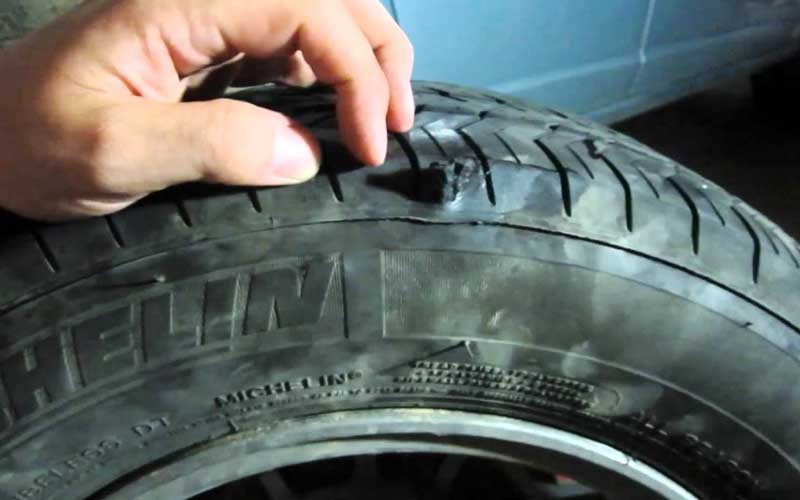
Photo: Petr Urbanek / Unsplash
Our new video
Geely Tugella: just look!
Youtube channel Behind the wheel gained 800 thousand subscribers
Instead of Largus and GAZelle: 5 shock impressions from the new "Chinese"
Like the article? Subscribe and you will always be in the know!
Driving on Yandex.Zen
News smi2.ru
Author: Kirill Savchenko
“Chief, you've got ten minutes of work to do, the hole is nothing! Well, come up with something . .. ”Every tire fitter has probably heard such words. Alas, not all tire damage can be repaired...
.. ”Every tire fitter has probably heard such words. Alas, not all tire damage can be repaired...
But the situation can be reversed. A wheel pierced by protruding reinforcement may be repairable, while a small cut will write off the tire for scrap. Experienced tire fitters believe that it all depends on the point of damage and the object that caused it.
Most often, drivers encounter punctures in the tread area of a tire. It is not always possible to detect it immediately. If in the days of tires and chambers the wheel lost pressure at the slightest puncture, then tubeless tires are much more reliable in this regard. A nail or self-tapping screw usually closes the puncture site, preventing air from escaping quickly.
With such a "plug" you can sometimes drive for months. The tire can lose pressure minimally without arousing suspicion. At the same time, an attempt to pull out a noticed nail on the way is likely to turn into a problem. In this case, the only recommendation is to pull out a foreign object only in a tire shop and repair the wheel.
In most cases, tread punctures are repaired either with special harnesses (some for temporary use, some for permanent use) or patches on the inside of the tire. Even damage caused by massive pins can be repaired. The main thing is that a piece of the tire along with the cord is not torn out.
In the latter case, the hole is filled with raw rubber, vulcanized, and a special cord patch is placed on the inside. But this will only be a temporary measure. In addition, such repairs are not cheap, and purchasing a new tire can be both more profitable and safer.
In addition to the plaster, cord “fungi” are also used. Lubricated with glue, the “fungus” is inserted into the puncture from the inside of the tire, then the excess part of the “leg” is cut off from the outside.
On the other hand, a cord patch can seriously help with side cuts. And car owners meet with them quite often. But here there are several nuances. In a roadside tire shop, the cut will most likely not heal. You need to contact a company with specialized equipment, primarily vulcanization.
You need to contact a company with specialized equipment, primarily vulcanization.
And one vulcanizer is indispensable here. Cord patches should be with a certain number of layers, designed for strictly defined damage sites and of a suitable size. And again we are talking about the nuances.
If the cut is in the shoulder area of the tire, then it is most often impossible to repair it qualitatively. The tire fitter who offered such a service is at great risk, even if he claims that he will weave a piece of new cord with his hands and vulcanize it. There are no miracles in this situation, but in any case, the last word belongs to an experienced specialist.
Side cuts on low profile tires with a tread height of less than 50% of the width are poorly treated. That is why, in the case of using a car on roads with a possibility of tire damage, it is better to put those that are higher. They are much easier and cheaper to repair.
By the way, an injury that looks like a cut at first glance may not be one. If the sidewall of the wheel catches on something sharp, and a tear forms on the tire without damaging the cord, then this is called a pinch. It does not carry momentary danger and does not require any complex repairs.
If the sidewall of the wheel catches on something sharp, and a tear forms on the tire without damaging the cord, then this is called a pinch. It does not carry momentary danger and does not require any complex repairs.
However, if a piece of rubber remains, then it is glued with ordinary superglue. If not, you will need raw rubber and a vulcanizer. It is impossible to leave the cord bare: under the influence of moisture, it can collapse, which will lead to the complete loss of the tire.
One of the most common and fatal tire defects is swelling or simply "herniation". Despite the absence of open damage to the rubber, such a wheel will be scrapped ahead of schedule. The fact is that when the sidewall is hit, the threads of the tire carcass break. Even if the swelling is very small, sooner or later the bump grows in size, and this is already fraught with an explosion of the wheel at speed.
However, some hernias can be repaired, but this is again a temporary measure. Masters can put cord patches even in the tread area. But only on condition that the distance from the sidewall to the swelling is more than 40 mm. If less, the tire is not subject to further operation. By the way, on low-profile tires, hernias, for the most part, are not repairable - both on the tread and on the sidewalls.
Masters can put cord patches even in the tread area. But only on condition that the distance from the sidewall to the swelling is more than 40 mm. If less, the tire is not subject to further operation. By the way, on low-profile tires, hernias, for the most part, are not repairable - both on the tread and on the sidewalls.
One of the major tire problems is caused by unprofessional repairs. Moreover, the owner most often does not know about it. We are talking about damage to the bead ring, as a result of which the tire does not initially hold the specified pressure.
Eventually the bead ring begins to push out of the rim. At high speed or under heavy load, such a wheel can be disassembled, which again threatens the car with a loss of control.
This damage can be repaired provided that the wire ring or base is not damaged. Special technologies for such repairs are not provided, but experienced craftsmen use the so-called "cold" or chemical vulcanization using a two-component sealant. The resulting mass covers places where there is no rubber on the bead ring. The main condition is to wait three days before mounting the tire on the disc.
The resulting mass covers places where there is no rubber on the bead ring. The main condition is to wait three days before mounting the tire on the disc.
As for Run Flat tires, according to the instructions of most manufacturers, they cannot be repaired. In extreme cases, you can use a bottle of special pressurized sealant that comes as a repair kit.
Comment of the expert of the company "SHINSERVICE":
Alexander Golubev
expert "SHINSERVICE"
First of all, we recall that most tire manufacturers do not recognize handicraft tire repair. It is considered a sign of external influence and changes in the design of the tire. Such a tire automatically voids the warranty. This does not happen if tire repairs are carried out in specialized, authorized tire brands services. Note that almost all major tire brands give their own extended warranty, according to which in most cases the repair is free, at a discount, or the product is generally replaced with a similar one, depending on the conditions of the program.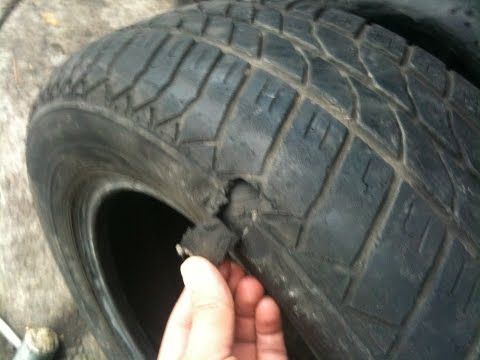
Based on our experience, we can say that in most cases damage in the bead area and in the shoulder area is not repairable.
I would also like to draw your attention to the fact that most low-profile tires have high speed indexes (V and above), and even after professional repair they will not be able to operate in the same modes without restrictions. Therefore, we strongly recommend changing the tire in all cases, except for tread punctures.
practice tires and wheels
Test drives / Test drive Haval Dargo vs Mitsubishi Outlander: the dog is barking, the stranger is coming In the Haval dealership in the south of Moscow, life is in full swing: buyers look at cars, communicate with managers and sign some papers. While I was waiting for the test Dargo, the same cross... 17745 7 205 13.